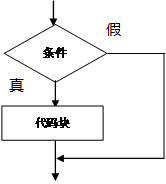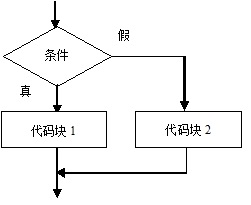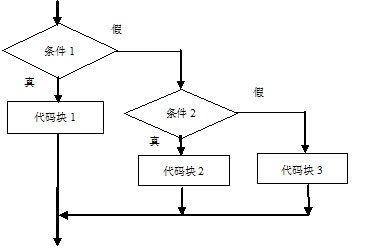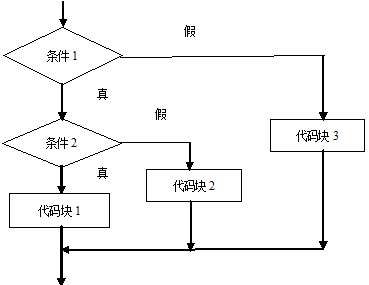java基礎第十篇 條件語句
阿新 • • 發佈:2018-11-02
1、if語句
語法:
if(條件){
條件成立時執行的程式碼 }例子:
public class HelloWorld7 {
public static void main(String args[]){
int a = 5;
int b = 6;
if((a+1)==b){
System.out.println("a小於b");
}
}
}
執行過程:

2、if...else語句
語法:
if(條件的布林表示式){ 條件的布林表示式返回true時執行的 程式碼塊1 }else{ 條件的布林表示式返回false執行的 程式碼塊2 }
程式碼例子:
public static void main(String args[]){
int a = 5;
int b = 6;
if(a>1){
System.out.println("a大於1");
}else{
System.out.println("a小於1");
}
}執行過程:

3、多重if
語法:
if(條件1){ 程式碼1 }else if(條件2){ 程式碼2 }else{ 程式碼3 }
程式碼例子:
public class HelloWorld7 { public static void main(String args[]) { int a = 5; int b = 6; int c = 7; if (a > c) { System.out.println("a大於c"); } else if (a > b) { System.out.println("a大於b"); } else if (b > c) { System.out.println("b最大"); } else { System.out.println("c最大"); } } }
執行過程:

4 巢狀 if 語句
巢狀 if 語句,只有當外層 if 的條件成立時,才會判斷內層 if 的條件。
語法:
if(條件1){
if(條件2){
程式碼1
}else{
程式碼2
}
}else{
程式碼3
}程式碼例子:
package HolleWorld;
public class HelloWorld8 {
public static void main(String arge[]){
int x=6;
int y=7;
int z=8;
if (z>x){
if(z>y){
System.out.println("z最大");
}else {
System.out.println("y最大");
}
}else {
System.out.println("z小於x");
}
}
}
執行過程:

5 Java條件語句之 switch
語法:
int a=8;
switch (表示式){
case 值1:
執行程式碼1
break;
case 值2:
執行程式碼2
case 值n:
執行程式碼n
break;
default:
預設執行的程式碼
}1、執行過程:當 switch 後表示式的值和 case 語句後的值相同時,從該位置開始向下執行,直到遇到 break 語句或者 switch 語句塊結束;如果沒有匹配的 case 語句則執行 default 塊的程式碼。
2、 switch 後面小括號中表達式的值必須是整型或字元型。
3、 case 後面的值可以是常量數值,如 1、2;也可以是一個常量表達式,如 2+2 ;但不能是變數或帶有變數的表示式,如 a * 2
4、 case 匹配後,執行匹配塊裡的程式程式碼,如果沒有遇見 break 會繼續執行下一個的 case 塊的內容,直到遇到 break 語句或者 switch 語句塊結束 如:
int c=1;
switch (1){
case 1:
System.out.println("吃雞肉a");
case 2:
System.out.println("吃瀨尿蝦a");
case 3:
System.out.println("吃龍蝦a");
default:
System.out.println("吃海蝦a");
}5、 可以把功能相同的 case 語句合併起來,如
int d=1;
switch (d){
case 1:
case 2:
System.out.println("吃了海鮮大餐");
}6、 default 塊可以出現在任意位置,也可以省略
典型程式碼例子:
public class HelloWorld9 {
public static void main(String arge[]){
int a=8;
int b=5;
switch (a-b){
case 1:
System.out.println("吃雞肉");
break;
case 2:
System.out.println("吃瀨尿蝦");
break
case 3:
System.out.println("吃龍蝦");
break;
default:
System.out.println("吃海蝦");
}
}
}
